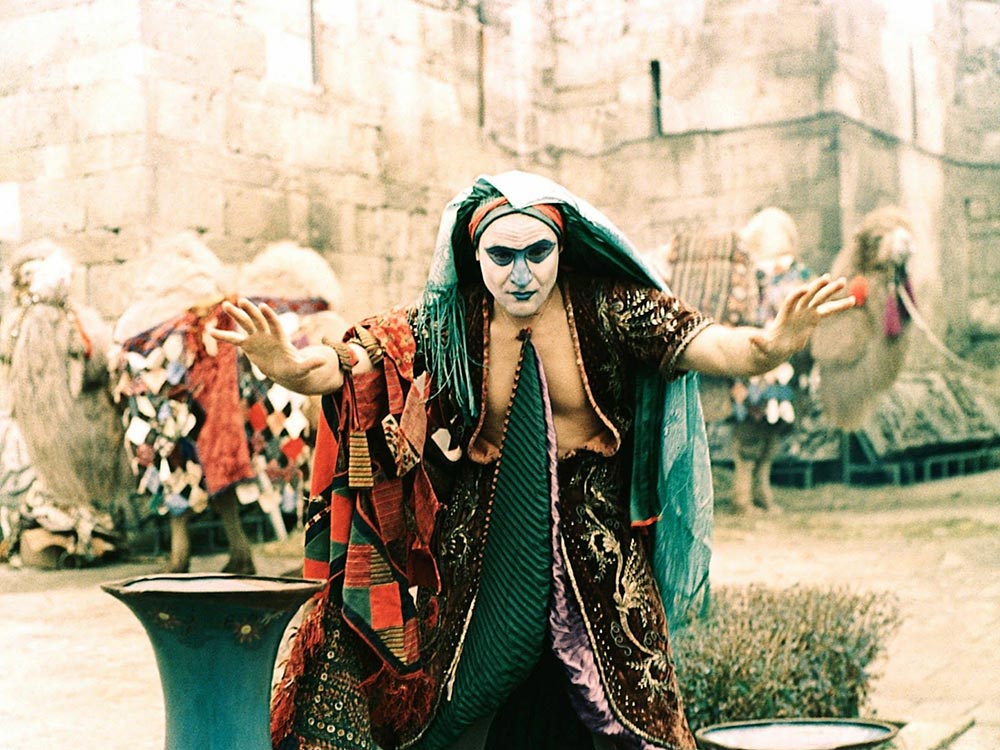In the opening minutes of The Legend of Suram Fortress (1984), women dressed in black chase after a cart full of eggs. The eggs will be mixed into the foundation of Suram fortress, the first of many escalating ritual sacrifices required to keep the fortress standing in this retelling of an 1860 novel by the Georgian writer Daniel Chonkadze.
Sergei Parajanov made the film after a fifteen-year hiatus from filmmaking during which he was repeatedly imprisoned, in part on charges related to homosexual activity. He is known for his instinctively appealing and folkloric visual language, with a freewheeling and effusive sensibility that opens up possibilities for interpretation and enjoyment in his work beyond their original cultural contexts. Suram Fortress, however, yokes this style more overtly to a mythical origin story of Georgian national independence and Christian identity as a political project. The film is dedicated to all those who gave their lives for Georgia’s independence, and tells the story of a sacrifice to save a bastion of military-political power, the last weak link in a defensive chain. Along with his last feature, Ashik Kerib (1988), both co-directed with the Georgian film actor Dodo Abashidze, it was produced after the leader of Soviet Georgia and future president of the country, Eduard Shevardnadze, suspended his last prison sentence and gave him a job at Georgia’s film studio.
Like his best-known film, The Color of Pomegranates (1969), Suram Fortress takes compositional cues from painting, with long, static shots of cave-like rooms stacked with carpets and rough-hewn stone colonnades crowded with craftworkers, merchants, dancers, and other inhabitants of Georgia’s mythical past. This film is more focused on these tableaux of collective life than the isolated, aching symbols of his better-known features; it is less concerned with the fate of its individual characters than the motions of the narrative as they play out in rituals of mourning, birth, and rebirth. Self-consciously theatrical, it takes field and fortress for its stage, with dance and ritual marking the passage of time and transition.
That makes the moments when it departs from these carefully framed, prosaic set pieces all the more jarring. The camera momentarily wanders to follow an angry crowd wielding torches to hover wonderingly at the face of a horse; this moment recalls the shuddering first shots of Shadows of Forgotten Ancestors (1965). A cold electric light pierces the darkness during the persecution of a character longing for his homeland, soon to reappear in the sparkling raiments of Saint George, protector of Georgia. Wistful views of the fortress, accompanied by plaintive singing, are interrupted as the hard sound of metal on stone seems to wet and then shatter the camera lens. Under the pageantry, there’s an edge of brutality—after all, this is a film about human sacrifice.
The Legend of Suram Fortress screens this afternoon, July 7, at the Museum of the Moving Image as part of “100 Years of Parajanov.” It will be preceded by Arabesques on the Pirosmani Theme.



